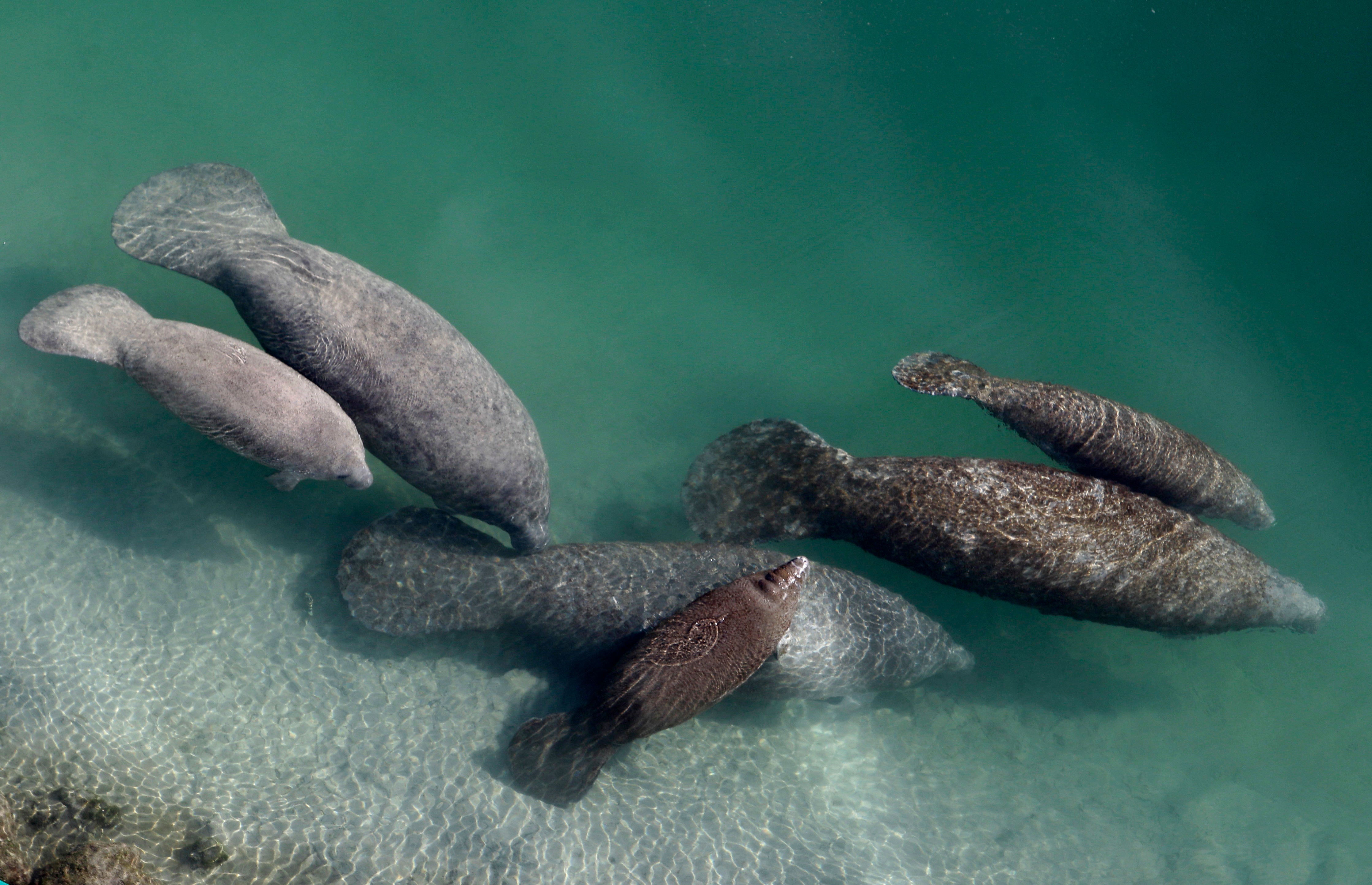Florida discontinues manatee winter feeding program after seagrass conditions improve
Wildlife officials say a two-year experimental feeding program for starving Florida manatees will not immediately resume this winter as conditions have improved for the threatened marine mammals and the seagrass on which they depend

Your support helps us to tell the story
From reproductive rights to climate change to Big Tech, The Independent is on the ground when the story is developing. Whether it's investigating the financials of Elon Musk's pro-Trump PAC or producing our latest documentary, 'The A Word', which shines a light on the American women fighting for reproductive rights, we know how important it is to parse out the facts from the messaging.
At such a critical moment in US history, we need reporters on the ground. Your donation allows us to keep sending journalists to speak to both sides of the story.
The Independent is trusted by Americans across the entire political spectrum. And unlike many other quality news outlets, we choose not to lock Americans out of our reporting and analysis with paywalls. We believe quality journalism should be available to everyone, paid for by those who can afford it.
Your support makes all the difference.A two-year experimental feeding program for starving Florida manatees will not immediately resume this winter as conditions have improved for the threatened marine mammals and the seagrass on which they depend, wildlife officials said.
Thousands of pounds of lettuce were fed to manatees that typically gather in winter months near the warm-water discharge of a power plant on Florida's east coast. State and federal wildlife officials launched the program after pollution killed off vast seagrass beds, leading to a record of over 1,100 manatee deaths in 2021.
This season, the Florida Fish and Wildlife Conservation Commission and U.S. Fish and Wildlife Service determined the seagrass has started to recover in key winter foraging areas on the east coast, and that there appear to be fewer manatees in poor physical condition going into the stressful colder months.
“After careful consideration, the agencies are not providing manatees with a supplemental food source at the beginning of the winter season,” the FWC said Friday in a notice on its website. “However, staff developed a contingency plan which they will implement if needed.”
Last year, more than 400,000 pounds (181,000 kilograms) of lettuce, most of it donated, was fed to manatees near the power plant in Cocoa, Florida.
Manatees are gentle, round-tailed giants sometimes known as sea cows that weigh as much as 1,200 pounds (550 kilograms) and can live as long as 65 years. Manatees are Florida’s official state marine mammal but are listed as a threatened species, also facing peril from boat strikes and toxic red tide algae outbreaks along the state’s Gulf coast. Their closest living relative is the elephant.
The starvation problem — something the wildlife agencies call an “unusual mortality event” — has been traced to nitrogen, phosphorus and sewage pollution from agriculture, urban runoff and other sources that trigger algae blooms, which in turn kill off the seagrass that manatees and other sea creatures rely upon.
Millions of state and federal dollars are being poured into dozens of projects ranging from stormwater treatment upgrades to filter systems that remove harmful nitrates from water that goes into the Indian River Lagoon, the huge east coast estuary where manatees congregate in winter. Seagrass beds have been replanted.
There have been 505 manatee deaths recorded between Jan. 1 and Nov. 24 this year. That compares with 748 over the same time frame in 2022 and 1,027 the year before that, according to the wildlife commission. The Florida manatee overall population is estimated at between 8,350 and 11,730 animals.
The agencies are not ready to declare the starvation problem solved and intend to closely monitor manatees and their environment to decide whether feeding or other steps are needed.
“Feeding wild animals is a temporary emergency intervention and conservation measures like habitat restoration, improving habitat access, and increasing capacity for rehabilitation are considered long-term solutions,” the Florida wildlife agency said in its notice.
Meanwhile, environmental groups are pushing to have the manatee again listed as an endangered species, a higher classification than threatened that provides greater protections. A petition seeking the change filed with the Fish and Wildlife Service contends it was an error to take manatees off the endangered list in 2017, where they had been since 1973.
The service made an initial finding in October that placing the manatee back on the endangered list may be warranted, an interim step that requires further review. Environmental groups say the move is encouraging.
"This is the right call for manatees and everyone who cares about these charming creatures,” said Ragan Whitlock, a Florida-based attorney at the Center for Biological Diversity. “I applaud the Fish and Wildlife Service for taking the next step toward increased safeguards. Manatees need every ounce of protection they can get.”